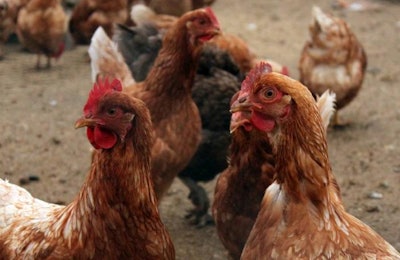
New cases of avian influenza continue to be reported in Asia and Africa, with multiple countries reporting outbreaks.
Avian influenza in Africa
A total of 49 outbreaks of highly pathogenic avian influenza (HPAI) caused by the H5N1 subtype of the virus have been reported by the veterinary authority in Nigeria to the World Organisation for Animal Health (OIE) over the last two weeks. The outbreaks were mostly among pullets and layer flocks in states where previous outbreaks have been recorded.
One, however, was in the eastern state of Adamawa, which borders Cameroon. In total, more than 196,000 birds have died or were destroyed as a result of the infection, which the authorities attribute to poor biosecurity.
The country’s Federal Ministry of Agriculture and Rural Development (FMARD) has organized a series of meetings in the Federal Capital Territory, aimed at educating poultry farmers and sellers about biosecurity measures to contain and control of avian flu there following recent outbreaks at three farms. Head of FMARD, Dr. Egejuru Eze, warned farmers of the dangers of concealing information on the health status of their birds in order to save the poultry industry from total ruin.
A farm in Niger with links to Nigeria became the location of that country’s first outbreak of HPAI in late January.
Cote d’Ivoire has recently reported 3 outbreaks of H5N1 HPAI on poultry farms between November 2015 and January 2016 to OIE. All were in the Abidjan area in the southeast of the country. In July and August last year, poultry at a number of markets in the same area were subjected to intensive testing and many were positive for the virus.
When subjected to surveillance, ostrich farms in Western Cape Province in South Africa continue to deliver a small percentage of positive tests for the H5N2 or H5N3 low-pathogenic avian influenza (LPAI). Five farms were identified during testing between September and November last year, according to reports submitted in the last 2 weeks to the OIE.
Avian influenza in Asia
Taiwan has been reporting outbreaks of HPAI since January 2015. Recently affected are four farms in Tainan City and Taoyuari County, affecting a total of 34,630 poultry, mostly ducks, which tested positive for the H5N2 variant of avian influenza. The H5N8 subtype was found in a sick native chicken at a slaughterhouse in Kaosiung City.
In its first reported outbreak since June 2015, China has confirmed an outbreak of H5N1 at a farm in Guizhou province affecting more than 35,000 birds.
Some grounds for cautious optimism in U.S. and Europe
In the United States, depopulation is complete of the 43,500 commercial turkeys at the farm in Dubois County, Indiana, where the H7N8 HPAI was confirmed last month. Cleaning and disinfection is progressing there. The discovery of the low-pathogenic form in another eight turkey flocks nearby resulted in the destruction of more than 155,000 more commercial turkeys to mitigate the risk of further spread. According to the USDA Animal and Plant Health Inspection Service (APHIS), the partial sequences of the LPAI and HPAI H7N8 viruses are nearly identical except for the HA gene insertion that imparts high pathogenicity to the HPAI virus.
Since mid-January, there have been no new AI outbreaks in France. According to the agriculture ministry, there were a total of 69 outbreaks in nine departments in the southwest of the country. Most recent reports of virus-positive birds at seven farms dating back to November and December of 2015 affected 24,000 birds, most of which were destroyed.
Surveillance by the veterinary authorities in Germany and the United Kingdom have revealed no new detections of the LPAI viruses that caused outbreaks in poultry flocks in January of 2016.
Human avian flu cases in Bangladesh and China
According to the latest update from the World Health Organization (WHO), there were 143 confirmed cases of influenza A H5N1 in 2015, including 42 deaths. Egypt was the worst-affected country with 136 cases and 39 deaths. Other victims were in China (5) and Indonesia (2). Since 2003, 846 cases including 449 deaths from the infection have been confirmed across the globe. WHO has been informed about 2 new confirmed cases – one in Bangladesh and one in China. Both had been in contact with poultry.
Since mid-December, 5 people in Guangdong Province in China have been confirmed with the influenza H5N6 virus, 3 of whom have died. Three of the five are known to have had contact with live poultry and one had handled duck meat.
China has also reported 10 new confirmed cases of influenza H7N9 over the same period, the majority following contact with live poultry. A total of 693 laboratory-confirmed cases of human infection with this virus have been reported to the WHO, including at least 277 deaths.
One human infection with avian influenza H9N2 virus has been reported to the WHO from Bangladesh. A poultry worker in a market in Dhaka City, the case has since recovered. He is the third person to have been affected by this virus in Bangladesh.

















